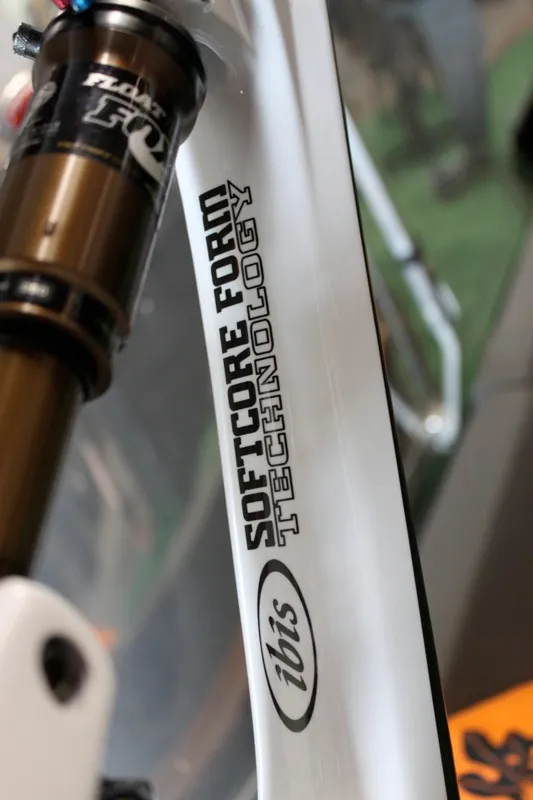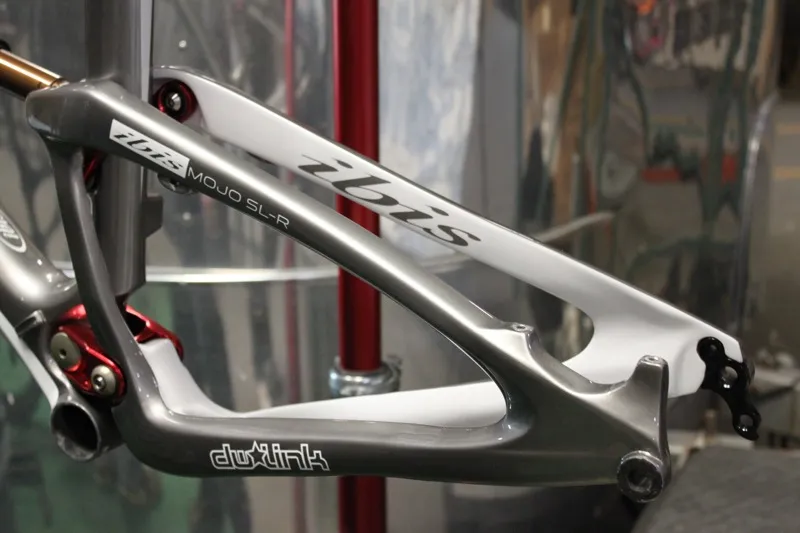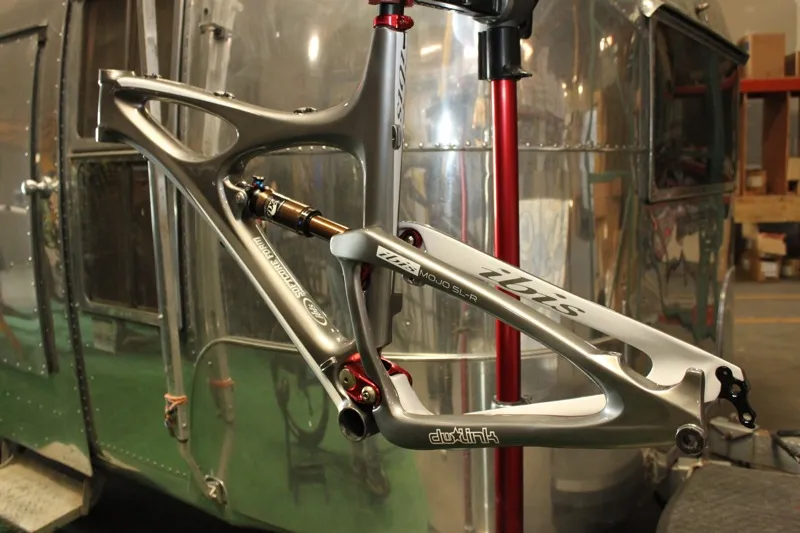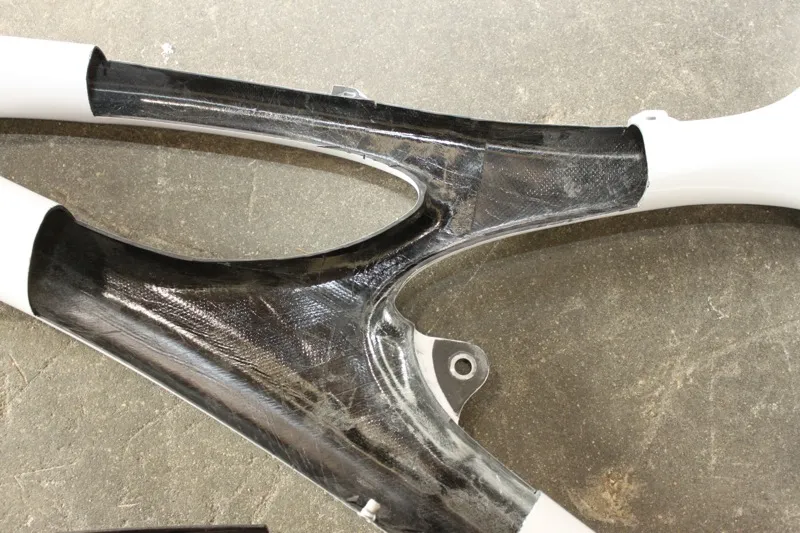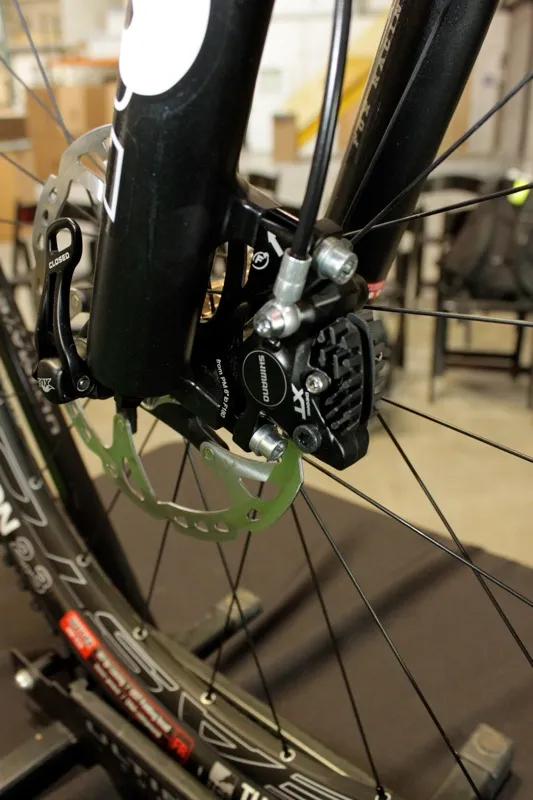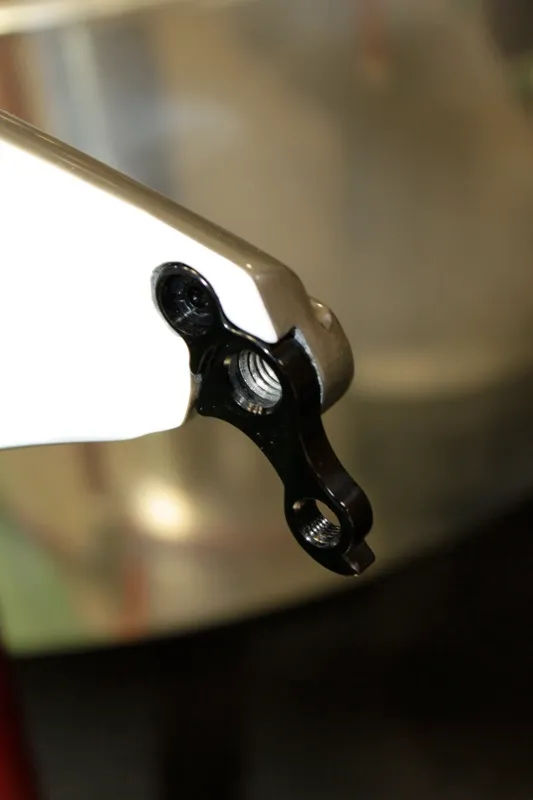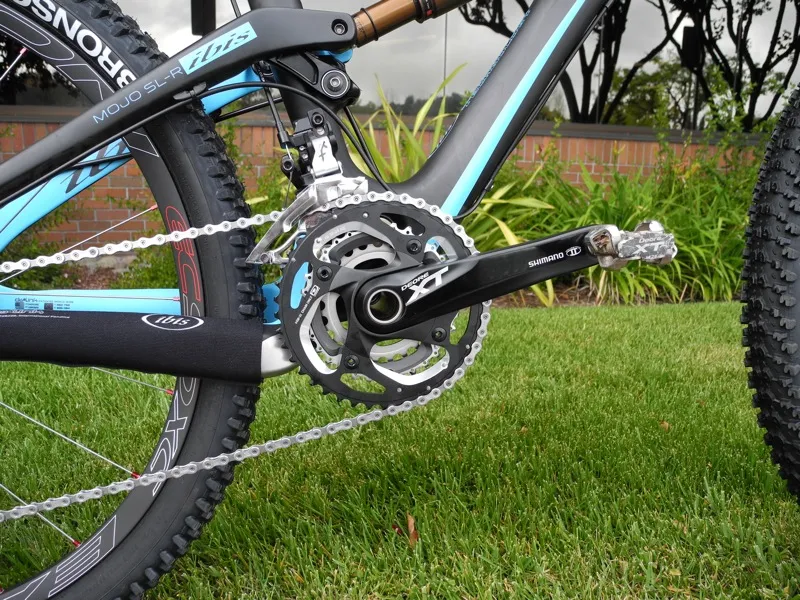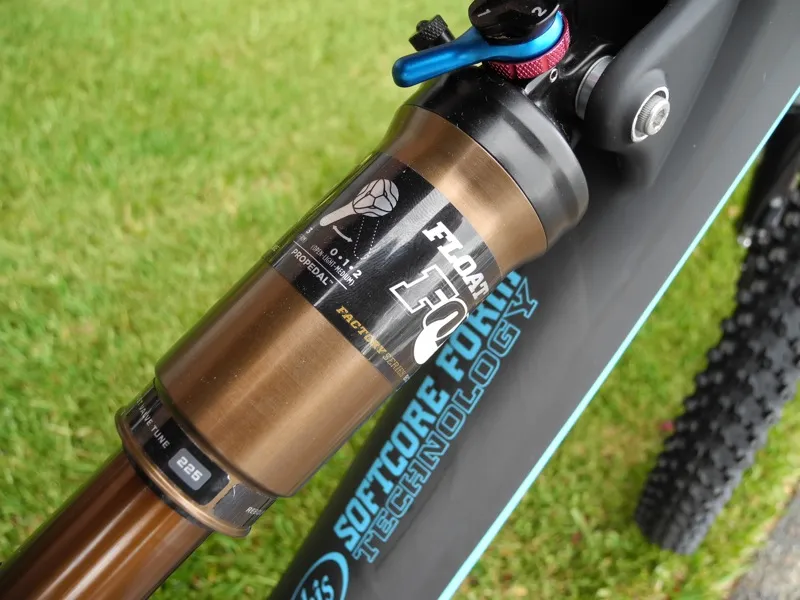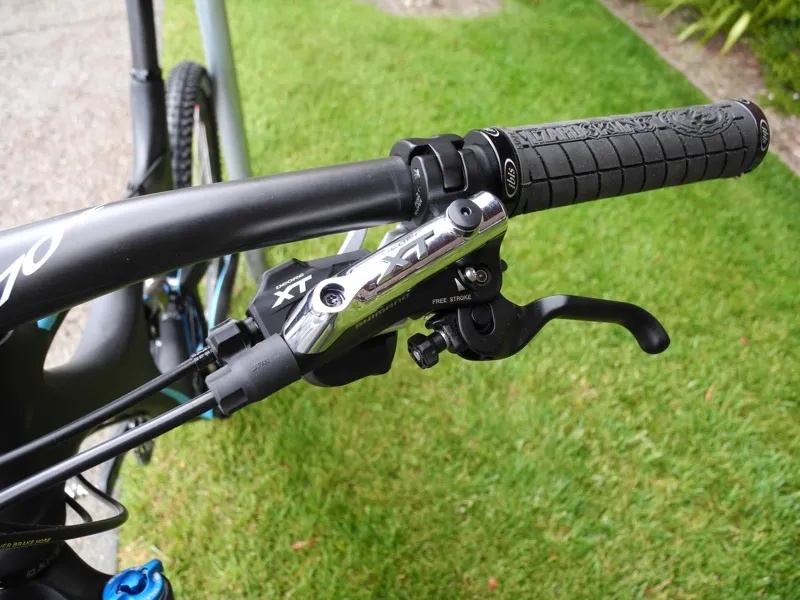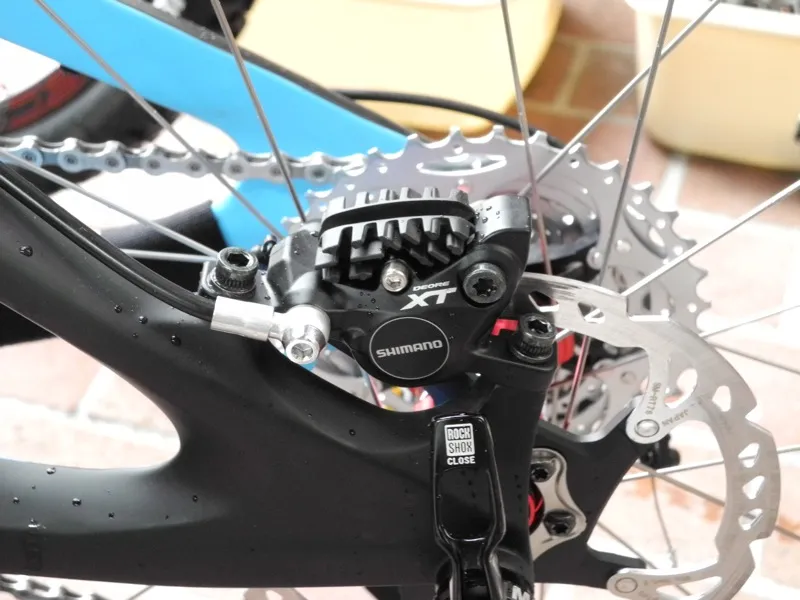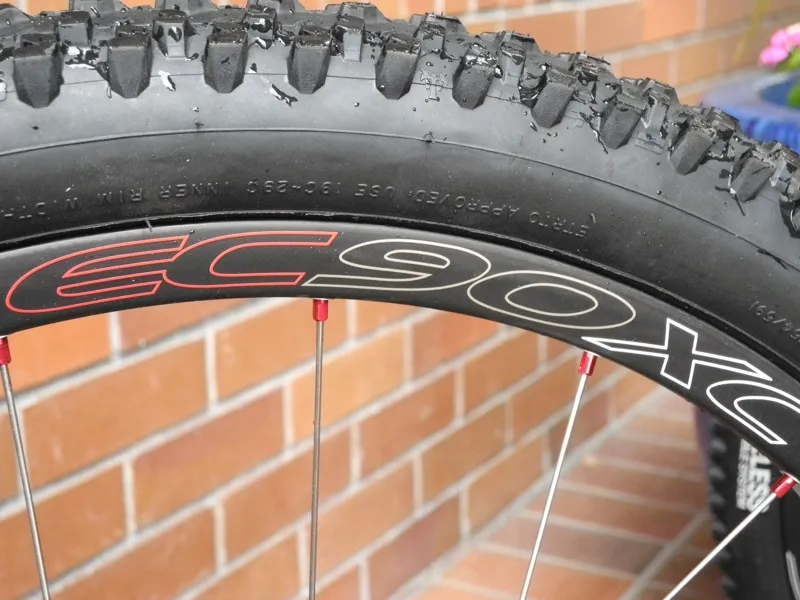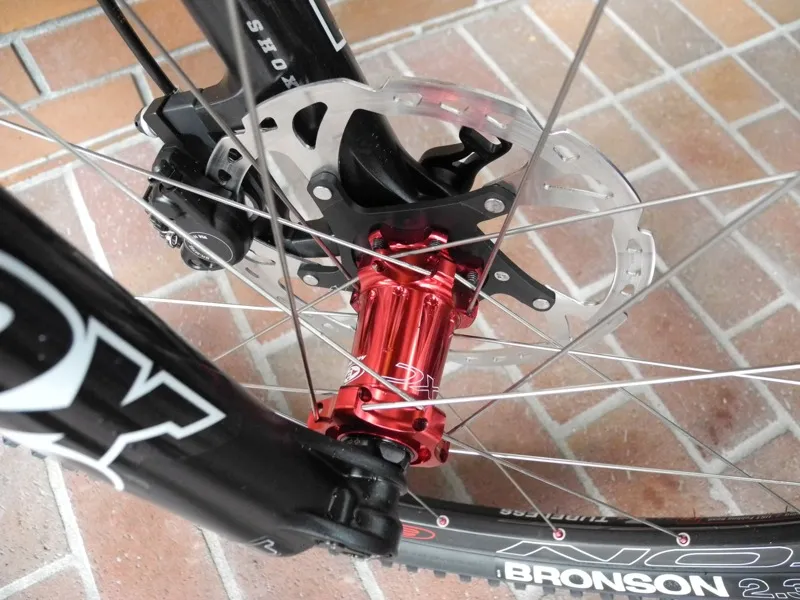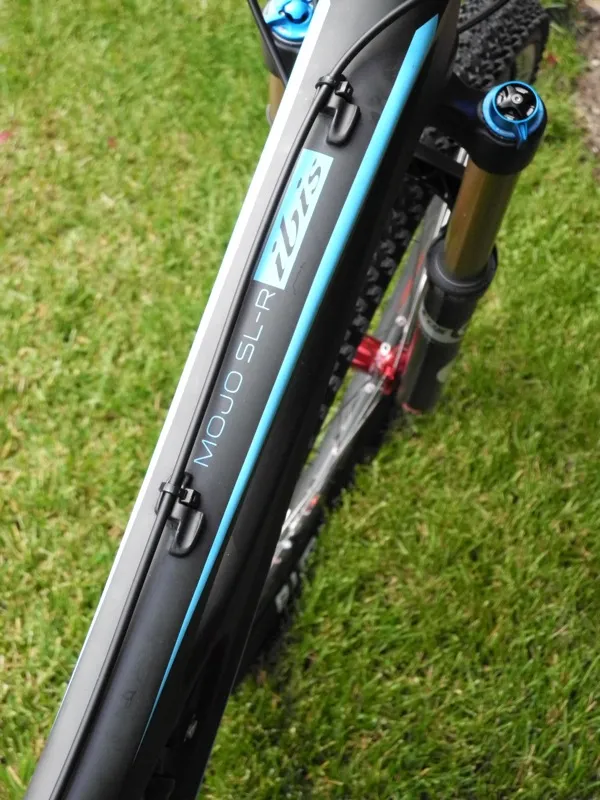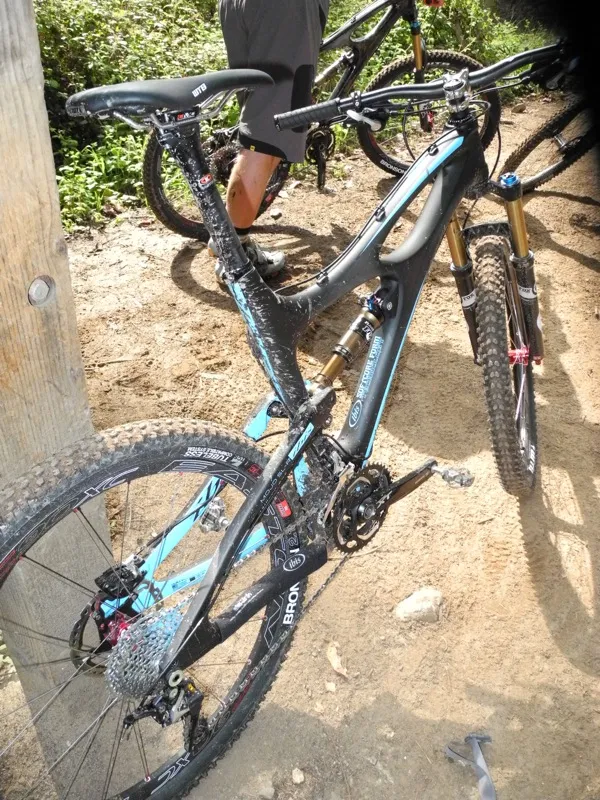Ibis Cycles are bringing out a new full-suspension trail bike which is said to be significantly stiffer and lighter than the current Mojo SL. Claimed weight for the new Mojo SL-R frame (with 2012 Fox RP23 shock) is just 4.98lb, while a complete bike decked out with Shimano XTR kit, top-of-the-line Fox suspension and Easton’s 1,250g EC90XC carbon wheelset is said to weigh just 22.4lb — yes, 22.4lb for a 140mm-travel trail bike.
The test bike we picked up at the Sea Otter Classic, which has the same wheels, Shimano’s new 2012 XT groupset (including pedals), an Easton cockpit and dropper seatpost, tipped our scales at 25.72lb (11.66kg).
When it comes to stiffness, Ibis cite a 10 percent lateral improvement and 100 percent torsional improvement compared to the original Mojo. In fact, they say the frame is nearly as stiff (80-90%) as the heavier-duty, longer-travel HD model yet weighs over 1lb less. “The old SL is great,” said Ibis founder and co-owner Scot Nicol. “But at some point it’s time to change everything — to keep up with the times."

Ibis founder and co-owner Chuck Ibis introduces his company's new bike
“We really learned a lot with the Mojo HD,” he continued. “The stiffness-to-weight [ratio] is pretty much unheard of for a 160mm-travel bike. So based on what we learned building that bike and how that bike was formed, we realized that we'd wrung out every bit of technology from the Mojo SL platform that we’d been using for the past six years. That's the genesis of the new bike — realizing that there are new standards and new technologies that are improving the way a bike rides.”
In the case of the SL-R, new technology (new molding process) and new standards (tapered head tube, BB92 bottom bracket, direct-mount front derailleur, 142mm rear Maxle and direct post-mount 160mm rear brake tabs) have allowed Ibis to wring maximum performance out of a platform that shares its dw-link suspension design, 140mm of travel and shock rate with the current Mojo.
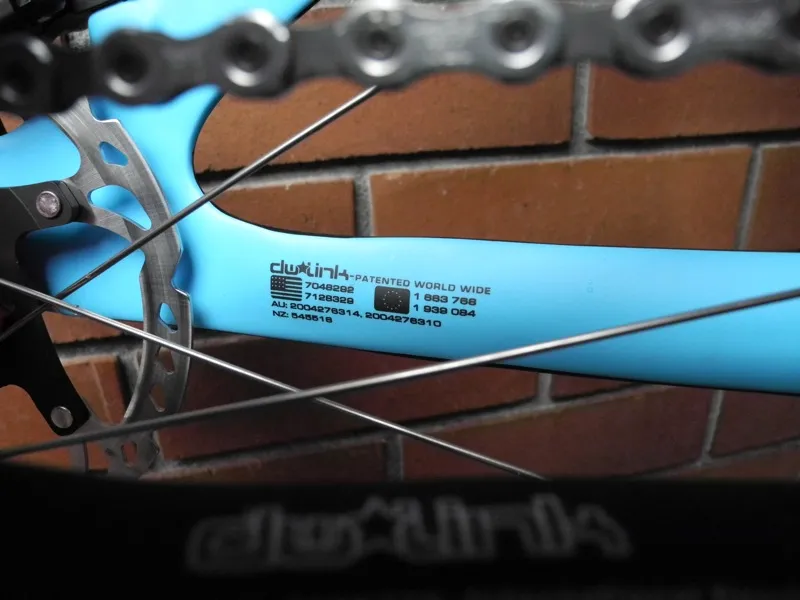
The Mojo SL-R uses the same dw-link suspension as the Mojo SL
Over the six years that Ibis have sold the Mojo and the second generation Mojo SL, they've continually improved the design. The 'dog bone' links have gone through 14 different iterations over the years, and Ibis have refined the carbon fiber layup and improved the consistency of the molding process, to lighten the frame and improve its stiffness.
“The Mojo is real tricky because of the cross brace,” said Colin Hughes, Ibis engineer and co-owner. This spans the top and down tubes and holds the forward shock mount. On both the Mojo SL and HD it's formed over a foam core. If you cut up one of these frames, you’ll see this. On the new SL-R, however, Ibis use a new process, in which the frame is molded over a latex mandrel that's removed post molding. This creates a clean internal shape and allows for an end product with a completely hollow structure — even through the tricky cross brace.
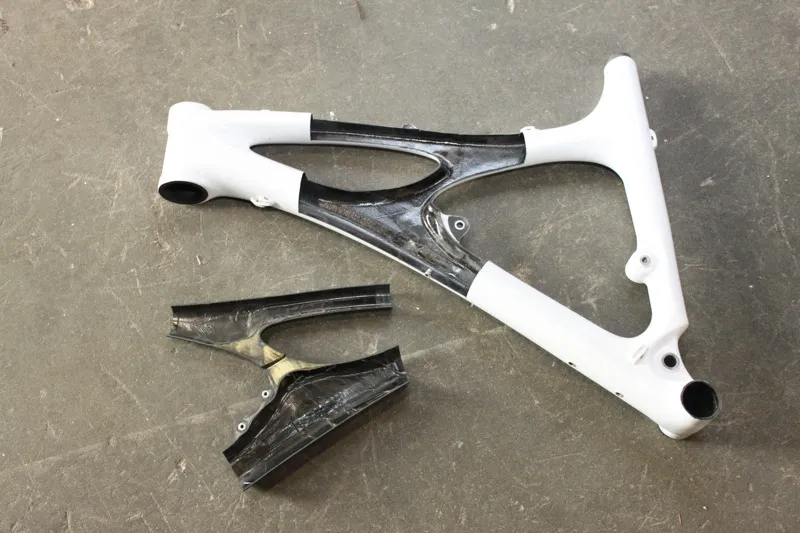
Old versus new: Cut-away views of the inside of the new Mojo SL-R (right) and cross brace of the Mojo SL
“We went out looking for a new technology and we came across a factory that was using a sacrificial core latex bladder and mandrel system,” said Hughes. “The way it works is that they mold a latex mandrel in the exact shape of the inside of the frame; it can be really complicated and it can include the cross brace.” Besides allowing for the hollow structure, the new molding and layup process allows Ibis to use larger plies in the bike, reduce voids and wrinkles in the carbon, and improves the overall consistency of the carbon structure. It takes longer, but is said to result in a stronger, stiffer and lighter frame.
The new bike shares its tapered head tube and down tube profile with the Mojo HD, as well as its rear through-axle, though the new bike’s dropouts are fully formed from carbon fiber. Cables are routed along the down tube which will accept the same belly plate cable/down tube guard as the HD. “We found that the tapered steerer really drives the character of the bike,” said Hughes. “How the fork feels — that stiffness in the front end — that’s a large part of how that bike [the Mojo HD] rides. This bike rides pretty close to an HD 140 [short-travel Mojo HD].
The Mojo SL-R has a 69º head angle [with a 140mm fork], but will come with the option of a new AngleSet adjustable angle headset from Cane Creek that allows it to be slackened in half-degree increments to 67.5º, and is compatible with a tapered steerer tube. The BB92 bottom bracket is said to dramatically reduce weight when compared to the previous threaded design, and when paired with the new direct-mount front derailleur, is said to better accommodate front derailleur position for 2x10 systems from both Shimano and SRAM.

The BB92 bottom bracket shell is completely open to the seat and down tubes
Using a direct-mount front mech gives Ibis more control over the shape of the seat tube; previously they had to step down to a 34.9mm round profile to fit a clamp-style derailleur. This contributes to the overall gain in stiffness and weight reduction over the standard Mojo.
“On the back is the 142mm rear Maxle through-axle dropouts and integrated carbon post-mount brake mount,” said Hughes. “The HD is 135 Maxle right now, but it’s going 142 very soon. The dropouts aren't separate pieces any more, they’re molded in all at once. It actually makes molding easier and it’s a lot more solid because there are no joints and less redundant material.”
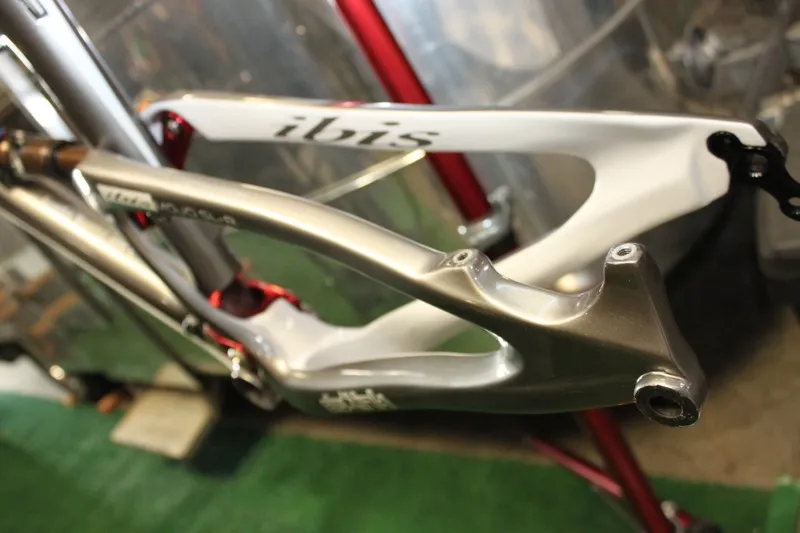
The new model sports a 142mm Maxle through-axle and 160mm direct post-mount brake
The new bike will draw inevitable comparisons to the SL, which will stay in the line, but with a reduced price of $2,199 for the frameset. Claimed weight of the SL-R is 4.98lb (large size), compared to 5.2lb for the SL. The two frames are also quite close in front and rear triangle stiffness. However, the new bike's tapered steerer and 142 Maxle are said to offer a big improvement over the SL's 1-1/8in front end and quick-release rear end.
The frame is finished with titanium fasteners and a Fox RP23 rear shock with Adaptive Logic Boost Valve. The new Mojo SL-R will cost US$2,499 and will be available in June in four sizes and four colors: orange, matte black with blue, silver and white. The standard XT-equipped complete bike, with Formula RX0 brakes, costs $4,899. UK pricing has yet to be confirmed.

